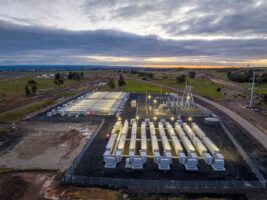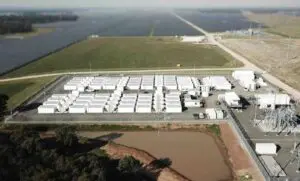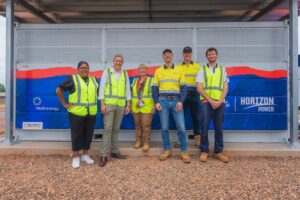Kiwi company Carbonscape has won $18 million to commercialise its graphite-made-from-wood technology in Europe and the US, in the hopes it will catch the eye of a sustainability-minded battery maker.
Finnish company Stora Enso, which has a “hard carbon” product on its books already, and Hong Kong-based battery maker Amperex Technology led the round.
Carbonscape is looking to commercialise the heavily patented technology, which puts wood chips from forestry industries through a low-temperature catalytic process to turn them into graphite.
The process being increasingly explored by researchers in the field is using an iron catalyst for turning wood into graphite, which is removed and recycled to use again using an acid wash.
Japan researcher published in Carbon Trends last year the results from their experiments using iron-spiked wood sawdust. The wet sawdust-iron mixture was first semi-carbonised at 250°C, followed by a second carbonization using a nitrogen atmosphere and acid washing.
That process was able to make a “graphite-like carbon” at a very low temperature of 850°C.
Although Carbonscape hasn’t revealed its own catalyst, one patent granted in the US lists the possible metals that could be used in the process being chromium, zirconium, molybdenum, ruthenium, rhodium, palladium, silver, cadmium, zinc, copper, nickel, cobalt, iron, manganese, chromium, vanadium or even sodium, magnesium, potassium, calcium, tin, lead “and others”.
The company says it can recycle its catalyst, so very expensive options such as ruthenium could still be a possibility.
Graphite is a critical part of lithium-ion batteries, as it stores the lithium ions during charging in a process called intercalation, and releases them during discharging so the ions can travel to the cathode.
But it’s not the cleanest of materials, as it’s sourced from mining or made synthetically by heating a carbon precursor such as coke to more than 3000°C.
Carbonscape claims its product is carbon negative and can save up to 30 tonnes of carbon emissions per tonnes of product made compared to mined or synthetic graphite.
The “biographite” will allow battery makers to cut the carbon footprint of each battery by 30 per cent, the company says.
If it takes off, the material might fill a forecast hole of 777,000 tonnes of graphite needed every year come 2030, given graphite makes up 20-30 per cent of the weight of a lithium ion battery.
“If we are to truly move away from fossil carbon and power our economies through mass electrification, we urgently need sustainable alternatives like biographite to scale quickly.”
Carbonscape is not alone in the wood-graphite industry however.
Its new investor renewable forestry giant Stora Enso did a deal with Swedish battery maker Northvolt in July last year to design a battery using a lignin-based hard carbon anode.
Stora Enso has a product called Lignode, which it calls “hard carbon”, made from lignin, the woody part of plants which it is selling into the battery industry as a replacement for mined and synthetic graphite.
This year Brazilian hardwood pulp conglomerate Suzano’s venture arm put $6.7 million into UK energy startup Allotrope to help it accelerate its EV batteries, which use graphite made from hardwood pulp.
Currently, China dominates global supply of mined graphite, accounting for about 85 per cent, and also has a near-monopoly over the industry that turns the raw material into the purified spherical graphite needed by batteries.
Battery makers tend to prefer synthetic graphite, because its more uniform crystalline structure helps lengthen battery life. But it is more expensive and due to the amount of energy it needs and use of fossil fuel as a feedstock, is also about four times more carbon intensive.










